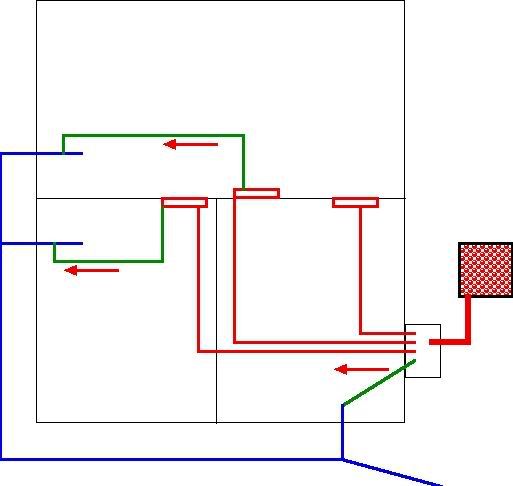Re: Curiousities abound
Okay, so now the guy who did it is wondering why he has been made to, so I will elaborate with more details.
The building is a three-plex. Judging from what I saw, there are substantial firewalls separating units, so technically, they could be considered "seperate structures" as outlined in 230.6. There is a three-stack metermain service, fed by the utility (conductor size unknown). They are planning on running a #2 CU GEC to the water pipe in only the closest unit, which is acceptable to the AHJ.
There are separate water "services" for each unit--so under the one roof, there are three water pipes that qualify for 250.52(A)(1). (The systems are Pex beyond 3'.)
My first question is: Do all three water pipes need to be used as Grounding Electrodes by code? My answer is yes.
Since the service stops outside one unit, and has feeders supplying the three units, Article 230's opinion of a structure becomes irrelevant. We would have to fall back on 100, which would seem to be the structure as a whole.
Therefore, I think that a #2 CU GEC must be run to all three water pipes.
The second part of my typically long post, is the LV grounding issue. My boss had an interesting take on why it would be illegal. He said that somewhere in the NEC it is stated that the grounding connection for a low-voltage demarc or similar area is required to be accessible without opening a Line Voltage enclosure. So landing the #6 for the phone guys in the 120/240 panel is violating that.
I haven't looked for that code yet, I am hurrying so my wife can talk to her mom.

I'm thinking the purpose is bonding, not grounding, but that's based on an assumption. Essentially, the AHJ has required a full size GEC to the closest water pipe, and then the farther water pipes are connected to their panel in each unit by a #6.
What makes it weird, is that the plumbing in all these structures is Pex.
So, thoughts?
 [ August 17, 2005, 09:56 PM: Message edited by: georgestolz ]
[ August 17, 2005, 09:56 PM: Message edited by: georgestolz ]


